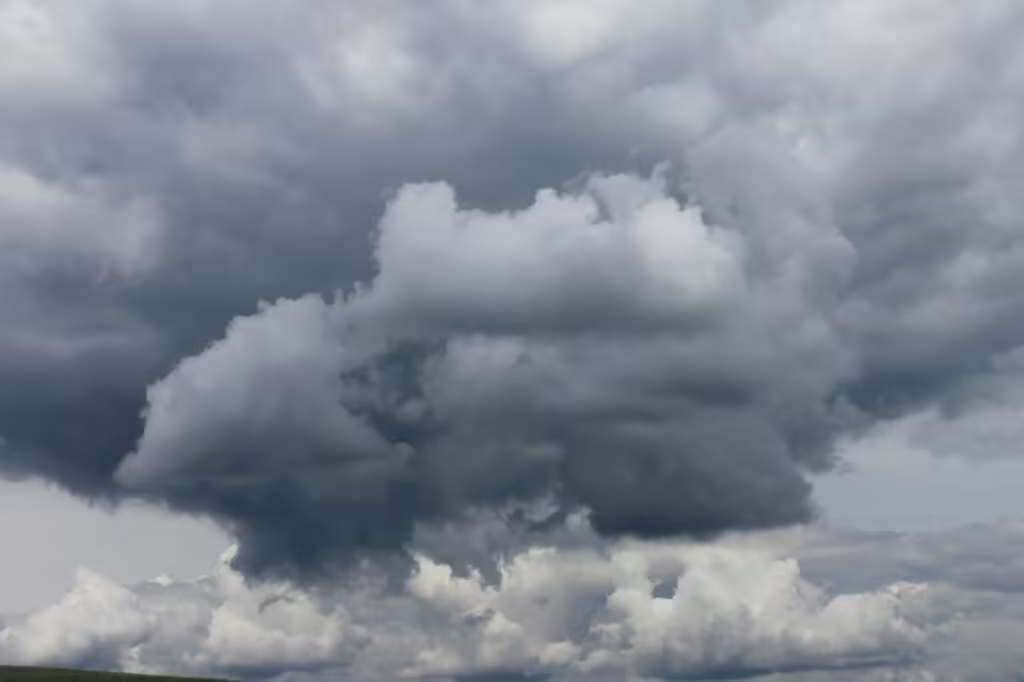A few regions in the world combine a variety of conditions that allow the formation of strong storms and hurricanes. The Caribbean region in Central America is the most exposed to these natural phenomena, in addition to other areas near the Gulf of Mexico and the North Atlantic, including the southeastern United States, especially the states of Florida, Louisiana, Texas and North Carolina.
The formation of a hurricane is a complex process that depends on a combination of specific atmospheric and oceanic conditions.
In this article we explain how a hurricane is formed and the climatic conditions necessary for its evolution in stronger categories.

When is the hurricane season in Florida?
The hurricane season in the Atlantic usually goes from June to November, with the peak of activity occurring between August and October. During this period, weather conditions are ideal for the formation of hurricanes with winds that can reach potentially devastating speeds.
Hurricanes are detected in advance
Fortunately, hurricanes are natural phenomena that, unlike other tragic events of nature (e.g. Earthquakes) can be detected in advance (days or even weeks), allowing, most of the time, the adoption of preventive procedures and even evacuation of potentially at-risk areas.
IMPORTANT: This article is informative and does not replace official guidelines. If you have a trip scheduled to an area at risk of storms or hurricanes, or are already in a risk or affected area, it is essential that you follow the updates of the meteorological and local authorities. Check official sources, such as the National Hurricane Center and other official sources. Follow the evacuation instructions and safety measures recommended by the authorities. If necessary, consider postponing or canceling your trip to ensure your safety and that of your family.
How a hurricane forms
Below we detail the main climatic conditions necessary for the formation of a hurricane:
1. Hot Waters
The first requirement for the formation of a hurricane is the presence of warm oceanic waters, with temperatures of at least 79.7°F to a depth of 164 feet. These waters provide the heat and humidity necessary to fuel the development of the storm.
2. Low Pressure and humidity
The heat of the water warms the air above it, causing this hot and humid air to rise quickly. As the air rises, an area of low pressure is created on the ocean surface, which generates more upward air currents.
3. Formation of Tropical Cyclones
As the humid and hot air rises, it cools down, forming clouds and releasing moisture in the form of rain. This continuous process of hot air rising and condensing forms a tropical storm that, if it gains enough strength, can initially be categorized as a cyclone.
4. Eye Turn and Formation
In the next stage and, depending on the conditions, where there are areas with low pressure, the air tends to move to this area. Due to the rotation effect of the earth, this displacement is curved. In the Northern Hemisphere this curve is to the left and in the Southern Hemisphere, to the right, due to a phenomenon called the Coriolis effect
This rotation of the Earth causes the air around the low pressure area to start rotating. When the speed of the storm’s winds reaches about 75 mph, the cyclone is classified as a hurricane. As the hurricane intensifies, an “eye” forms in the center, which is an area of relatively calm conditions and high pressure surrounded by storm clouds and very strong winds, known as the eye wall.
5. Maintenance and Intensification
The hurricane continues to intensify as it flies over hot and humid waters, where it gets enough energy for rotation. It moves according to atmospheric currents and can vary in intensity. The hotter the water and the lower the pressure in the center, the stronger it becomes.
The intensity of a hurricane is measured by the Saffir-Simpson scale in categories 1 to 5, where 5 is the strongest, with winds above 155 mph.
6. Hurricane dissipation
Hurricanes begin to weaken when they move over colder waters, touch the land (event called ‘landfall’, when they lose the source of moisture and heat), or encounter higher-level winds that interfere with their structure. When it loses strength, the storm degrades into a tropical depression.
About this Blog
At AMG International Realty, our goal is to bring clarity and transparency on important topics related to Florida, offering guidance and relevant information to those who live, invest or visit the state.
This article is merely informative. Despite our expertise of more than 20 years in Florida’s real estate sector, our performance does not include meteorological services and we do not replace official information provided by competent authorities in cases of natural phenomena, such as hurricanes. For your safety, always consult official sources and follow the guidelines of the authorities in emergency situations.

